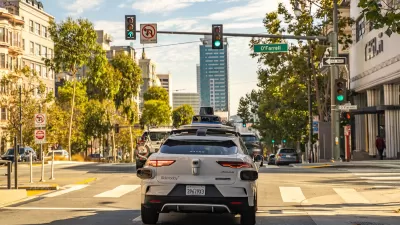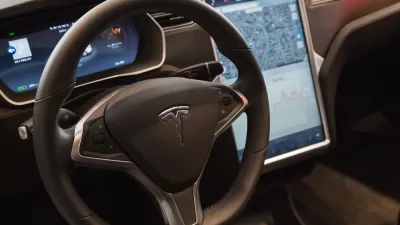Bright LED headlights can create glare and reduce visibility for other drivers and pedestrians.

If you’ve noticed car headlights being extra bright recently, you’re not alone. In a piece for Vox, Hady Mawajdeh explains how LED technology and safety concerns have led to increasingly brighter headlights.
Brighter headlights can make conditions safer for drivers, but cause new problems for people (and animals) outside the vehicle (or in other vehicles). Because the National Highway Traffic Safety Administration (NHTSA) has no limits on how bright headlights can be, carmakers are incentivized to make them as bright as possible. “Nor do federal safety ratings for car models consider the safety of anyone outside the car, as Vox contributor David Zipper explained last year — only the safety of a given car’s occupants is included.”
However, bright headlights can be deadly for pedestrians. “Mark Baker, founder and president of the advocacy group the Soft Lights Foundation, which aims to protect people from the harmful effects of LED lighting, thinks headlight intensity, in addition to the increasing prevalence of large cars on American roads, might be linked to the uptick pedestrian deaths at night.”
To mitigate the issue, carmakers and owners can take steps to make headlights safer by aiming them downward to avoid blinding other drivers and pedestrians. “NHTSA could also create headlight intensity limits, which state and local authorities could then use as a baseline for enforcement.”
FULL STORY: Why are car headlights so blindingly bright now?

Planetizen Federal Action Tracker
A weekly monitor of how Trump’s orders and actions are impacting planners and planning in America.

Congressman Proposes Bill to Rename DC Metro “Trump Train”
The Make Autorail Great Again Act would withhold federal funding to the system until the Washington Metropolitan Area Transit Authority (WMATA), rebrands as the Washington Metropolitan Authority for Greater Access (WMAGA).

The Simple Legislative Tool Transforming Vacant Downtowns
In California, Michigan and Georgia, an easy win is bringing dollars — and delight — back to city centers.

The States Losing Rural Delivery Rooms at an Alarming Pace
In some states, as few as 9% of rural hospitals still deliver babies. As a result, rising pre-term births, no adequate pre-term care and harrowing close calls are a growing reality.

The Small South Asian Republic Going all in on EVs
Thanks to one simple policy change less than five years ago, 65% of new cars in this Himalayan country are now electric.

DC Backpedals on Bike Lane Protection, Swaps Barriers for Paint
Citing aesthetic concerns, the city is removing the concrete barriers and flexposts that once separated Arizona Avenue cyclists from motor vehicles.
Urban Design for Planners 1: Software Tools
This six-course series explores essential urban design concepts using open source software and equips planners with the tools they need to participate fully in the urban design process.
Planning for Universal Design
Learn the tools for implementing Universal Design in planning regulations.
Smith Gee Studio
City of Charlotte
City of Camden Redevelopment Agency
City of Astoria
Transportation Research & Education Center (TREC) at Portland State University
US High Speed Rail Association
City of Camden Redevelopment Agency
Municipality of Princeton (NJ)





























